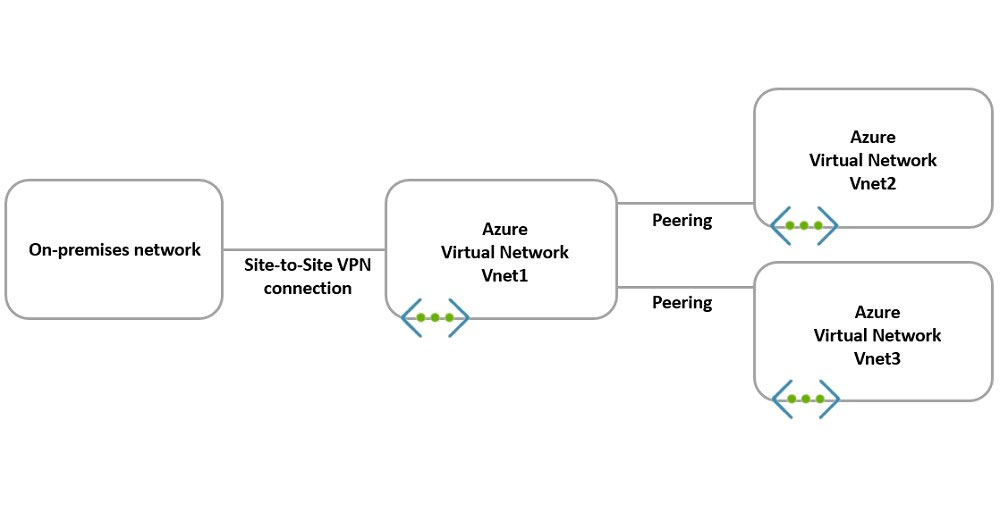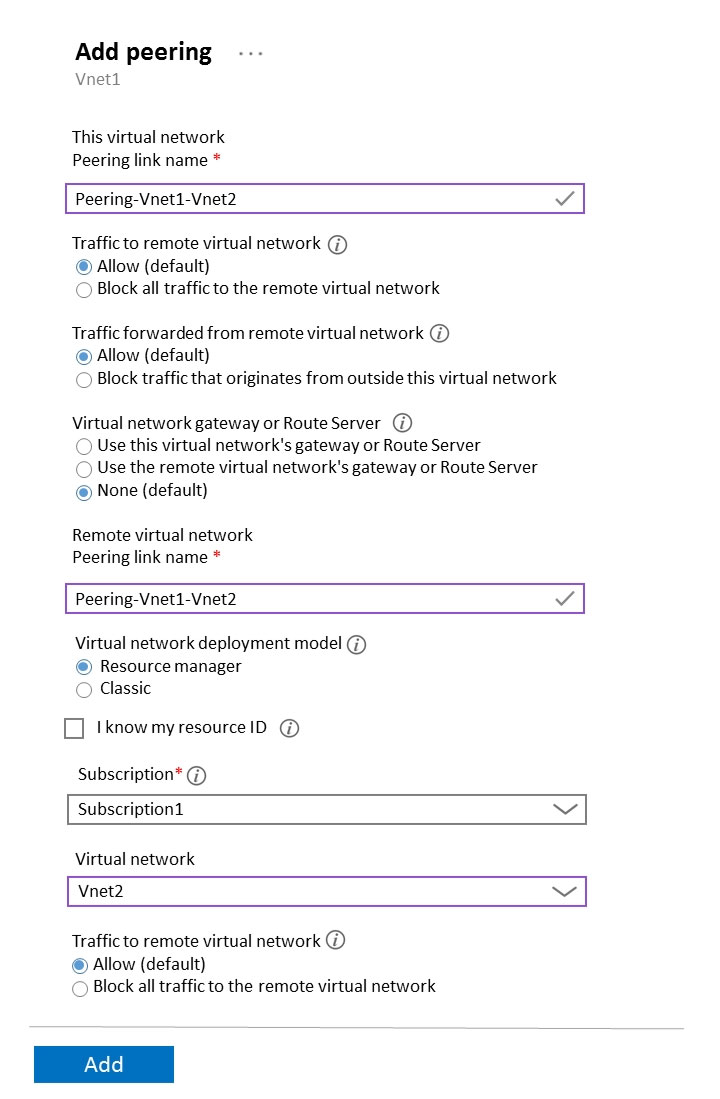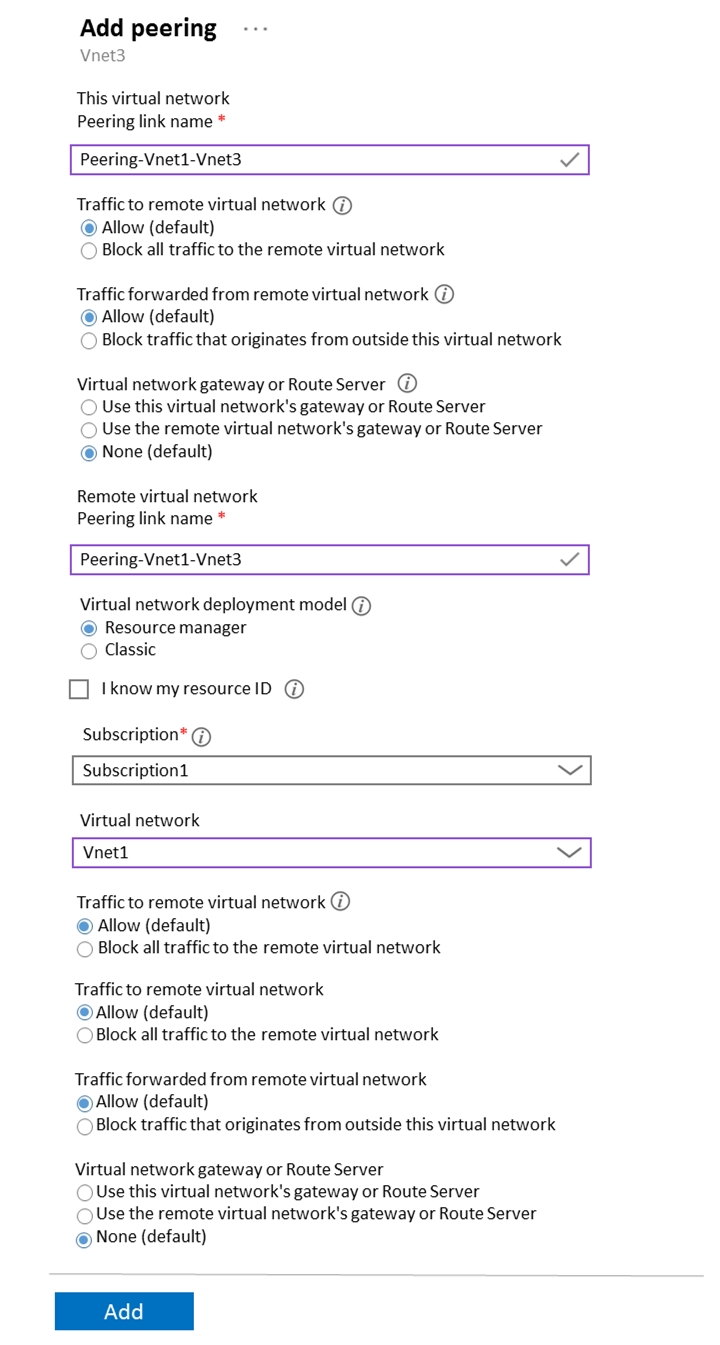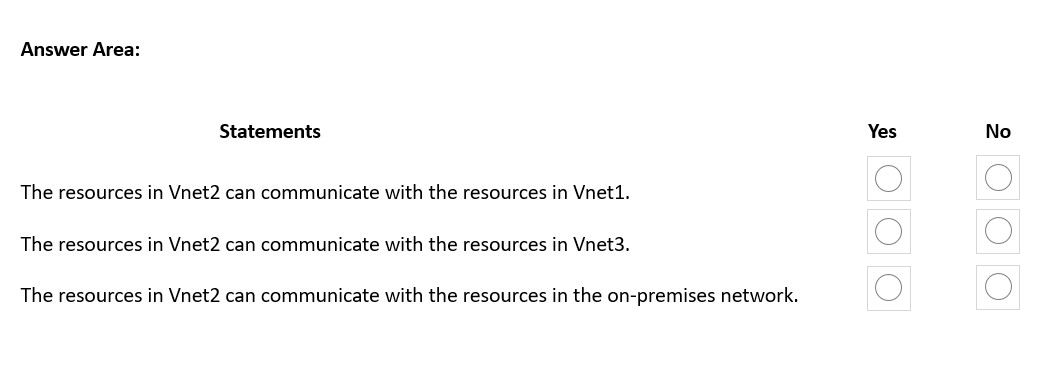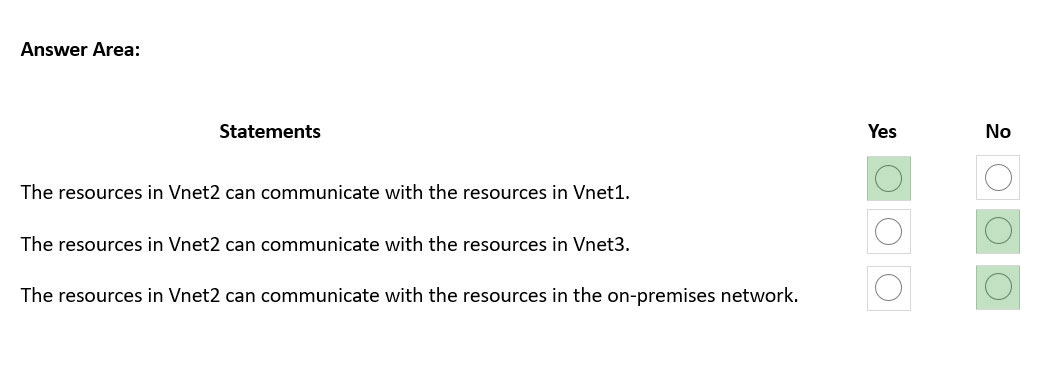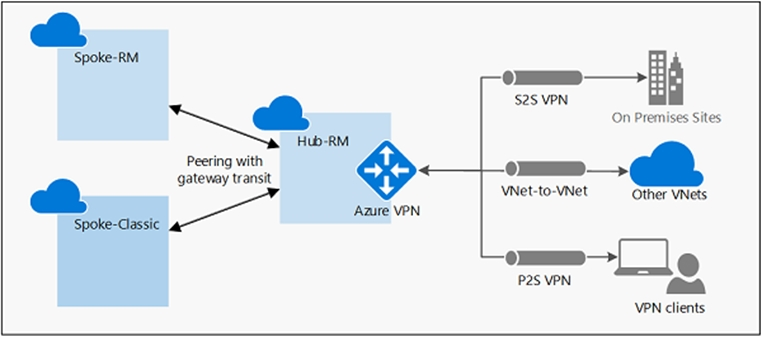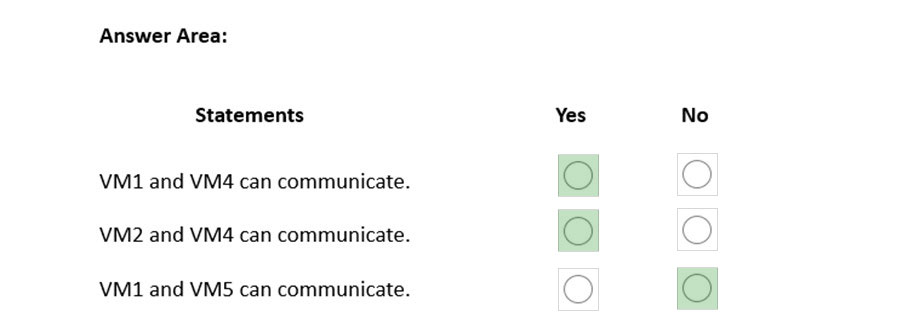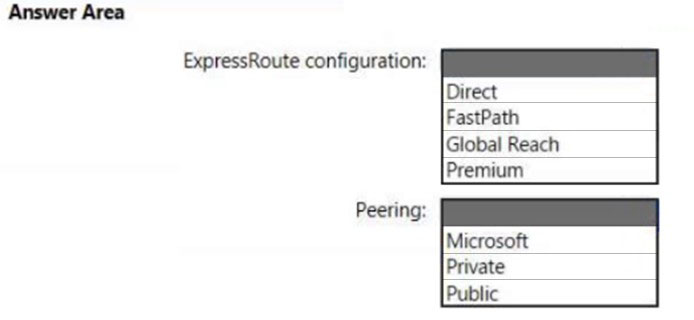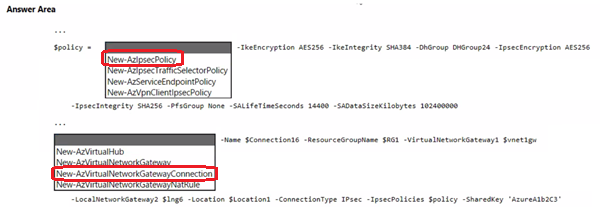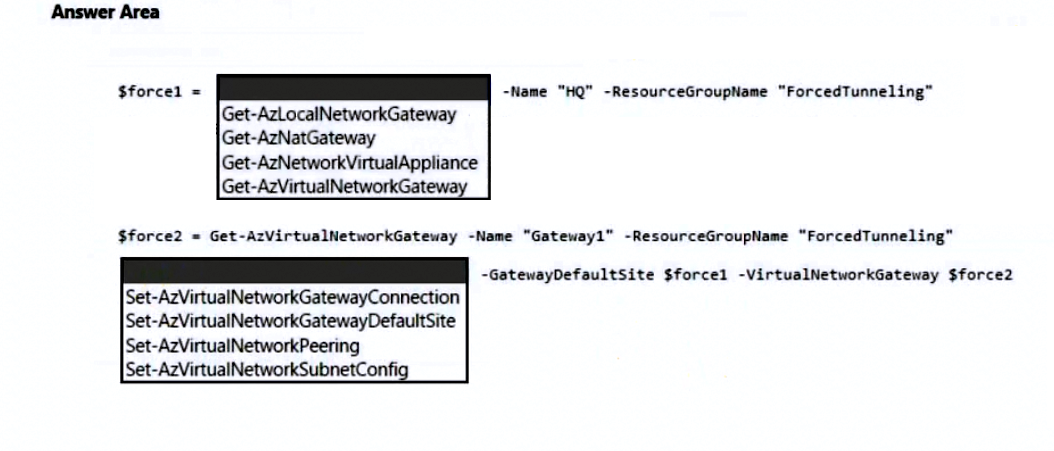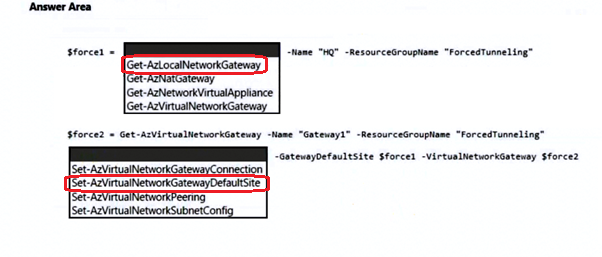Box 1: Yes -
Virtual network peering seamlessly connects two Azure virtual networks, merging the two virtual networks into one for connectivity purposes. Gateway transit is a peering property that lets one virtual network use the VPN gateway in the peered virtual network for cross-premises or VNet-to-VNet connectivity.
The following diagram shows how gateway transit works with virtual network peering.

In the diagram, gateway transit allows the peered virtual networks to use the Azure VPN gateway in Hub-RM. Connectivity available on the VPN gateway, including S2S, P2S, and VNet-to-VNet connections, applies to all three virtual networks.
In hub-and-spoke network architecture, gateway transit allows spoke virtual networks to share the VPN gateway in the hub, instead of deploying VPN gateways in every spoke virtual network.
Box 2: Yes -
VM2 uses the remote gateway GW1 to reach VM4.
Box 3: No -
VM2 can reach VM4 through GW1, but not VM5 as VNEt1 does not use remote Gateways.
Reference:
https://docs.microsoft.com/en-us/azure/vpn-gateway/vpn-gateway-peering-gateway-transit
https://docs.microsoft.com/en-us/azure/virtual-network/virtual-network-troubleshoot-peering-issues
